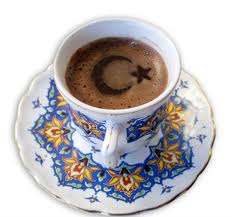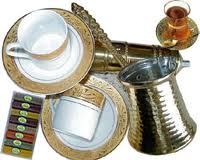Turkish Coffee
The coffee tradition in Turkey began sometime in the 15th century. It is a very fine powder-like grind and can be consumed at 6 different levels of sweetness: from black to very sweet.
Any sugar requested is added during the making of the drink and thus a spoon is not necessary to have at the table or wherever the coffee is served. Additionally, all cups of the hot java must have some foam on the top surface or the drink is considered less than perfect.
Two traditions that survive today in Turkey connected to coffee drinking are strongly connected to the fairer sex.
First, after finishing the drink, the hostess traditionally turns the cup over and allows the grinds to settle on the saucer. These are then read as a fortune teller would read your palm or a tarot card reader would see into our future. Many gatherings of women will commonly include this activity in their time together.
The other ritual that has been handed down over the centuries is that of the skill a bride-to-be is expected to possess in the preparation of a cup of coffee. When an arranged marriage does not meet the approval of the female to be betrothed, it has been the case that she purposely makes a less than satisfactory drink for her prospective in-laws.
The Turkish variation of coffee has transcended borders and cultures over the years due in part to the extensive reach of the Ottoman Empire. In Greece, which was occupied by the Turks for over four centuries, one can even order coffee by the term "Turkiko" which was widely heard up until the last decade or so.
So, for a robust cup of hot Joe, one would be amiss to not include the Turkish version of preparation. Sit down, relax, and go back in time to the era of Sultans and take a magic carpet ride while sipping on a delicious beverage that can be enjoyed in the morning, evening or any time in between.




